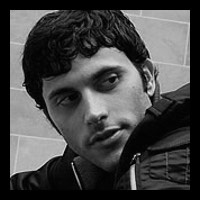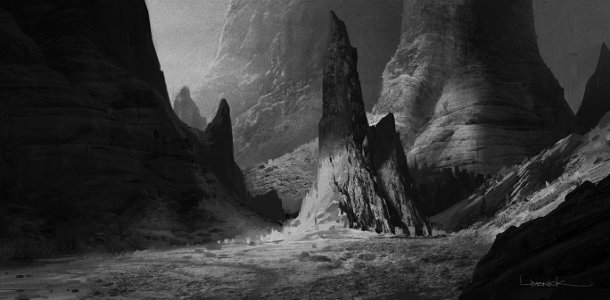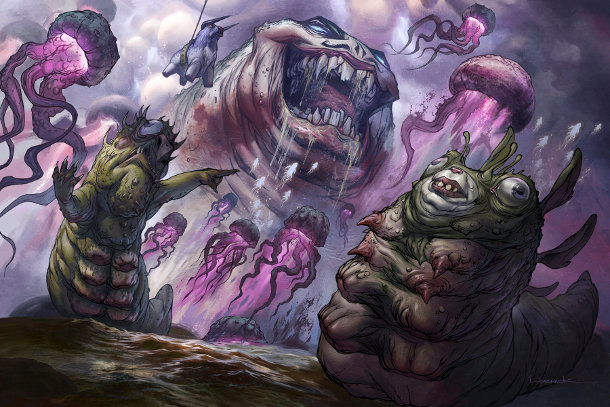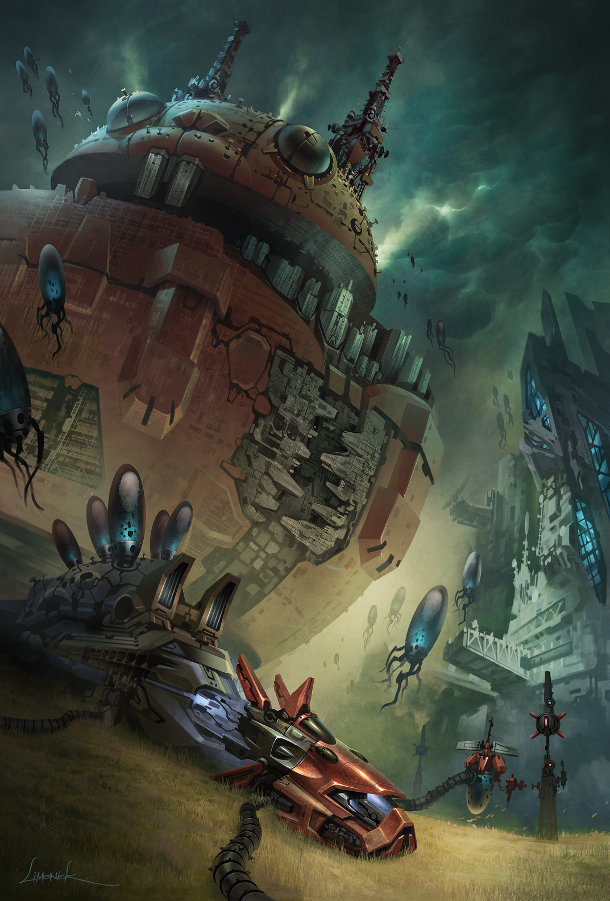Q&A: Aaron Limonick, Naughty Dog concept artist
 The son of a musician and a jewellery designer, Aaron Limonick was exposed to art from an early age. Having experimented with landscape painting, abstract art and especially graffiti – his first job in the industry came through a graffiti art collaborator – Aaron graduated from the Art Center College of Design in 2005.
The son of a musician and a jewellery designer, Aaron Limonick was exposed to art from an early age. Having experimented with landscape painting, abstract art and especially graffiti – his first job in the industry came through a graffiti art collaborator – Aaron graduated from the Art Center College of Design in 2005.
He has since worked as a concept designer and illustrator on a number of projects including the Tony Hawk and Guitar Hero franchises, GUN, Deadwood, Drawn: The Painted Tower, The Bourne Conspiracy and Transformers: War for Cybertron. He is currently working for Sony at Naughty Dog in Santa Monica.
In his session for the Gnomon School of Visual Effects’ online Master Classes, which go out from 5-19 December, Aaron will be talking about concept art: from abstraction to production.
At the earliest stage of pre-production, inspiration is the artist’s most important weapon when pitching an idea to a director. In the class, Aaron shows you how to put this idea into practice, developing an abstract ink experiment to a realized conceptual sketch.
The session covers a range of digital painting techniques, ranging from industrial design styles to creating a traditionally painted look and a textural surface in a digital medium.
We caught up with Aaron to find out more about the class, his advice for maintaining creative individuality in an increasingly identikit world – and why collaboration is the true key to success in today’s CG industry.
http://vimeo.com/32926192
The trailer for Aaron Limonick’s Gnomon Master Class – Concept Design: From Abstraction to Production. To see the entire session, sign up for the Gnomon School of Visual Effects’
CG Channel: If you had to give a five-word pitch for the class, what would it be?
Aaron Limonick: ‘Creating artwork through subconscious abstraction.’
CGC: What do you most hope that people remember after finishing the class?
AL: I hope that people remember why we all create art in the first place. That may be different for each person, as some people are more technical than creative. For me however, it’s because I like to go to imaginary places in my mind and attempt to recreate that vision through imagery. This almost always falls short of what’s in my mind, but art is that constant challenge of chasing the vision and allowing it to materialize in some way.
After working in production for years, it’s really easy to get stagnant or lose creative momentum. Since all we do as designers is create artwork for some predetermined purpose, it’s rare that we just get to do whatever we want. This makes the creative muscle weak after years of disuse and eventually some artists lose it entirely.
I wanted to demonstrate how we can mix inspiration with the production process. It’s a really tough thing to show, but I am passionate about the idea and could definitely see myself expanding on it in the future.

Aaron’s Master Class explores how to turn an abstract ink experiment into finished concept art.
CGC: You’ve said that when you were at college, you found the competitive nature of successful artists both inspiring and intimidating. Do artists need to learn to be better team players?
AL: Absolutely! In entertainment, it is so important for us to be collaborative. That obviously applies to working with others on a project, but I think it also means socially.
This isn’t something that people often mention, but artists that work together should go out for a drink once and a while and talk about something other than art. People need to have respect for each other, and should feel comfortable interacting on a non-professional, non-robotic level.
I’ve worked on teams where all the artists do their own thing and don’t talk much, and I’ve worked on projects where the concept artists are all very close friends. There simply is no comparison between the two. Social interaction makes everyone happier to be in the studio and thus more charged up to create inspiring content.

A personal piece entitled Tequila Jellyfish Launch. Go out for a drink with your colleagues after work, advises Aaron Limonick – you’ll all benefit, and so will the art you produce.
CGC: Apart from ‘go out drinking with your colleagues’, what one piece of advice would you give to a young artist hoping to become a concept designer?
AL: Things are definitely different coming out of art school today than they were five or six years ago. With all the demos and classes available online, a lot more people are coming out technically proficient. However, that’s also making everyone’s work look the same, because no one cares about anything except technique any more.
Lately, I’ve been to a bunch of grad shows for recruitment and if you spun me around a few times in a circle, I wouldn’t be able to tell them apart. You will find a lot of great technique, and no ideas whatsoever. This is bad.
Upcoming artists should improve on finding inspiration outside the concept art world. As much as we all love looking at our favorite concept designers today, the real question should be who were they looking at – and who were those people looking at? As time marches on, it’s going to be more and more crucial to get to the root of our influences to separate ourselves from the pack.

Bunny Tank Devours Cities, another personal piece. Lots of graduates have great technique, argues Aaron Limonick – what really sets people apart from the pack is unique ideas.
CGC: What part of your working day most makes you think: ‘This is why I do this job?’
AL: There are a bunch of different things about my job that are gratifying. The most common one is when a 3D environment artist really nails the feel and look that we were going for and it comes through completely in the final product. It puts the exclamation point on the production pipeline and makes me feel like we’re all in sync. Again, I’m a teamwork kind of guy, so I think it has a lot to do with the fact that I’m part of something much bigger than any of us as individuals could accomplish.
On that note, I’ll just sit back sometimes after chatting while painting for a while and just think, “How is this my job?”. I just don’t let a single day go by without feeling grateful for this incredible industry and all the insanely talented people that I get to work with here in LA. Not one day.
CGC: But if you could wave a magic wand and change one thing about the profession, what would it be?
AL: I would allow concept art to play more of a role in the development of ideas. I know that sounds like what we already do, but not as often as people think.
Occasionally, we are involved in a true ‘blue sky’ process where there really are no limits and the directors want to see crazy ideas, but that’s rare, and even if it does happen, the ideas aren’t usually carried further than that.
Some day I would like to sit down with only a writer/director and come up with a ton of initial material to act as the guidelines for the rest of the project. So many projects spend a lot of time going back and forth between ideas, making huge changes. An ‘art bible’ would save a lot of time and money. Keeping things consistent avoids giving the rest of the team a moving target to hit.
Visit Aaron Limonick’s website
Visit the Gnomon website to enrol for the Master Classes ($295 for all 14 classes)
Full disclosure: CG Channel is owned by the Gnomon School of Visual Effects.
